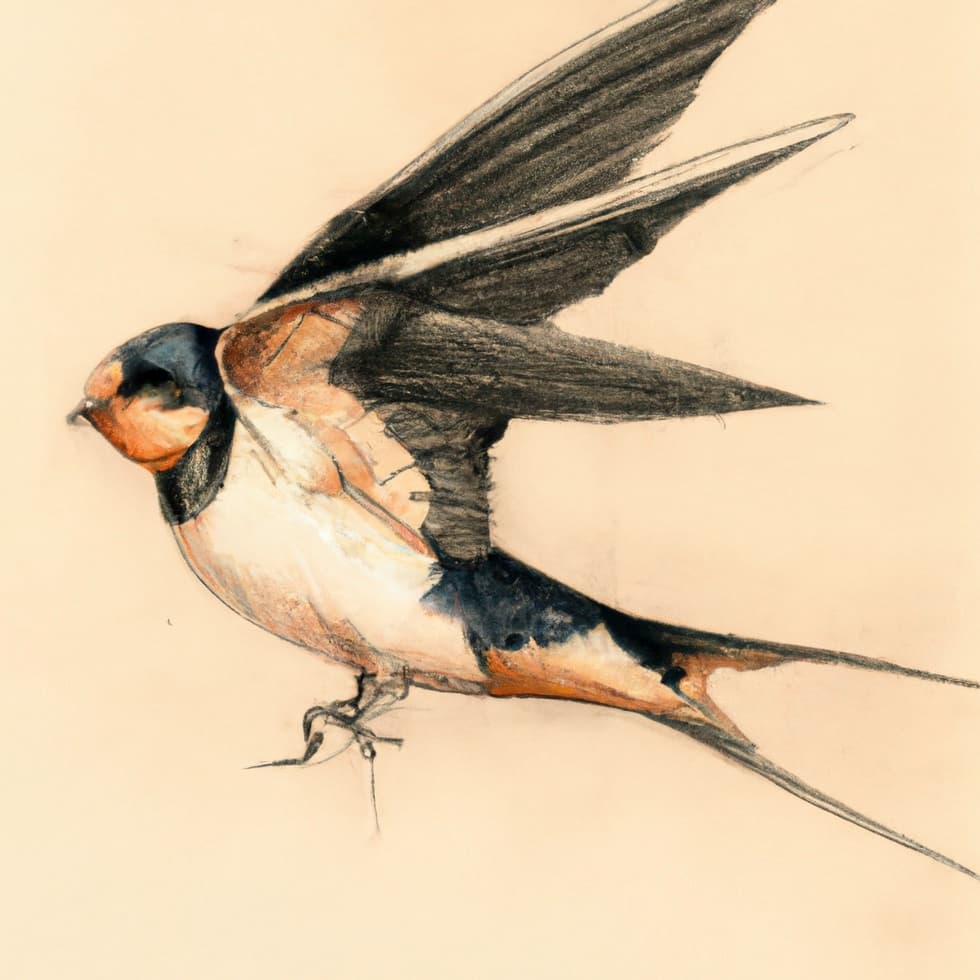
The Swallow is a beautiful and graceful bird that is known for its distinctive forked tail and acrobatic flying abilities. With their long, pointed wings and aerodynamic bodies, Swallows are one of the most iconic and well-loved bird species in the world. In this blog, we will explore 27 curious facts about the Swallow.
27 Curious Facts about the Swallow
- The Swallow is a small passerine bird that is found in most parts of the world.
- They are known for their distinctive forked tail and acrobatic flying abilities.
- The scientific name for the Swallow is Hirundo rustica.
- Swallows are known for their fast and agile flight, with some species able to reach speeds of up to 70 km/h (43 mph).
- They are migratory birds, with some populations travelling thousands of kilometres each year to breed and feed.
- Swallows have a unique courtship display in which males perform a series of aerial acrobatics to attract females.
- They have distinctive blue-black plumage and a red or rusty throat.
- Swallows are found across most of the world, with some species found in every continent except Antarctica.
- The Swallow’s diet consists primarily of insects they catch in flight.
- Swallows are a popular symbol of spring and are often associated with renewal and rebirth.
- The Swallow is a monogamous bird and mates for life.
- They are known to positively affect human mood, with studies showing that exposure to their song and flight can improve mental well-being.
- Swallows are known to return to the same nesting site each year, often using the same nest or building a new one nearby.
- The collective noun for a group of Swallows is a “flight.”
- Swallows are known to roost in large groups, sometimes numbering in the thousands.
- The Swallow is a protected species in many countries due to habitat loss and persecution.
- The Swallow is the subject of many works of art and literature, including the Japanese haiku poem “Barn Swallows.”
- Swallows are known to have a strong homing instinct and can find their way back to their breeding grounds even after being displaced hundreds of kilometres away.
- Swallows are known to use man-made structures, such as bridges and buildings, for nesting sites.
- Swallows have a unique vocalisation consisting of a series of chirps and clicks.
- Swallows are often preyed upon by larger birds of prey, such as falcons and hawks.
- The Swallow’s wingspan can range from 20 to 35 centimetres (8 to 14 inches).
- Swallows are known to have a positive effect on crop yields due to their predation on insect pests.
- Swallows are a popular bird for birdwatchers and are often included in birdwatching tours.
- The Swallow is a symbol of freedom and independence in many cultures.
- Swallows are known to have a positive impact on the environment, as they help to control insect populations and promote biodiversity.
- Swallows are a sign of good luck and prosperity in many cultures.
Where to Find the Swallow
Swallows are found across most of the world, with some species found in every continent except Antarctica. They prefer open areas, such as meadows, fields, and wetlands, where they can catch insects in flight. Some species are also known to roost and nest in man-made structures, such as bridges and buildings.
Feeding the Swallow
Swallows primarily feed on insects, such as flies, mosquitoes, and beetles, which they catch in flight. They are not typically fed by humans in the wild, but it is important to note that the use of pesticides and herbicides can have a negative impact on their food sources and habitat.
Final Thoughts
The Swallow is a truly unique and fascinating bird, known for its graceful flight and aerodynamic abilities. Despite being a common bird, they face many threats, including habitat loss and persecution. Whether you are a seasoned birdwatcher or simply appreciate the beauty of the natural world, the Swallow is a bird that is sure to inspire and uplift. So next time you see a Swallow soaring through the sky, take a moment to appreciate the beauty and wonder of this remarkable species.